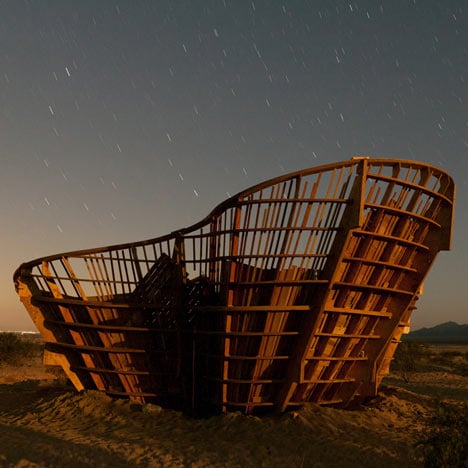
Yucca Crater by Ball-Nogues Studio
You can clamber down the inside walls of this ramshackle timber basin in the desert by Los Angeles designers Ball-Nogues Studio into a surprise swimming pool.
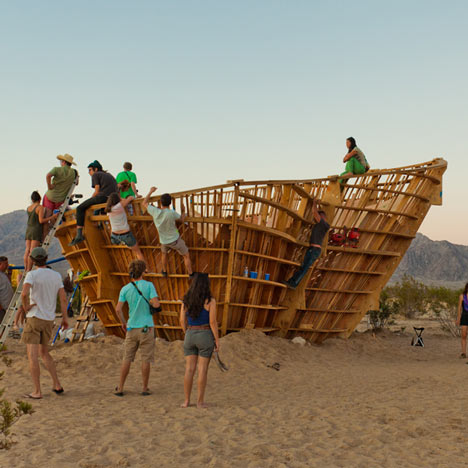
The pavilion is located in the plains outside the California town of Joshua Tree and was constructed as part of the experimental art project High Desert Test Series.
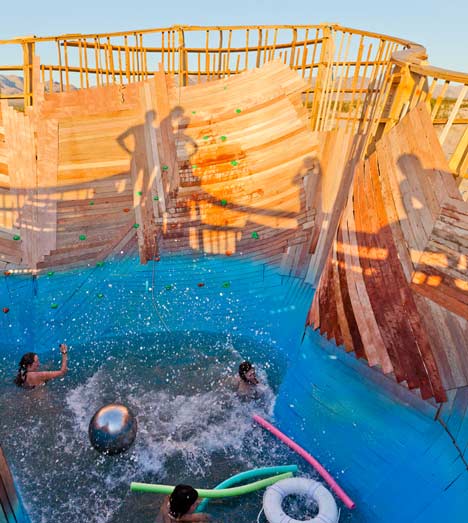
A ladder allows visitors to climb over the exterior, while rock-climbing treads are affixed to the interior walls.
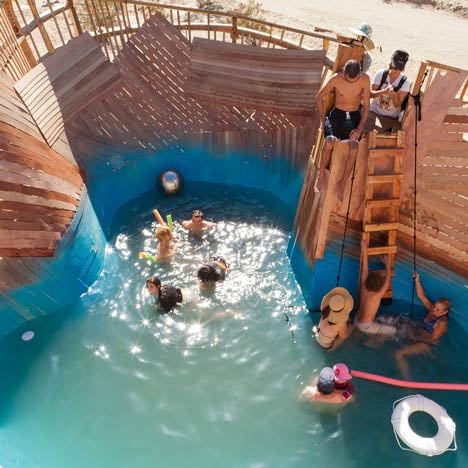
The plywood used for the walls of the pavilion was salvaged from the formwork of another pavilion, which was is situated in Canada.
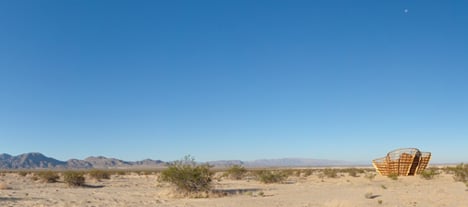
We interviewed architect Benjamin Ball of Ball-Nogues Studio about a dragon-like installation made from clothing at the Shenzhen & Hong Kong bi-city Biennale in 2009 - watch the movie here and see the project here.
Photography is by Scott Mayoral.
Here's some more text from Ball-Nogues Studio:
Some thoughts on Yucca Crater –
Located in the barren desert near Joshua Tree National Park, 15 miles from the nearest human settlement, Yucca Crater is a synthetic earthwork that doubled as a recreational amenity during High Desert Test Sites on October 15 & 16, 2011. High Desert Test Sites generates physical and conceptual spaces for art exploring the intersections between contemporary art and life at large. After the event, Yucca Crater was abandoned to the entropic forces of the landscape.
The work resembles a basin that stands 30 feet from rim to low point and is depressed 10 feet into the earth. Rock climbing holds mounted on the interior allow visitors to descend into a deep pool of salt water.
Yucca Crater expands on concepts borrowed from land art, incorporating the prospect of the abandoned suburban swimming pools and ramshackle homestead dwellings scattered across the Mojave. Ball Nogues have re-imagined these interventions in the landscape through a method of production where the tools of fabrication transform to be become objects for display in their own right. The rough plywood structure of Yucca Crater was originally the formwork used to construct another Ball-Nogues work, Talus Dome, in which more than 900 boulder-sized polished metal spheres were assembled to appear as a monumental pile of gravel. The two projects were “cross-designed” such that the method of production used in the first (Talus Dome) has become the central aesthetic for the second (Yucca Crater).
This approach integrates concept, aesthetics, social relationships and production, inviting viewers to reconsider their relationship to art by-products while repositioning them within an alternative economic and geographic domain.
Principals in Charge: Benjamin Ball and Gaston Nogues
Project Manager: Benjamin Jenett
Project Team: Karla Castillo, Deborah Chang, Tyler Crain, Constantina Dendramis, Jessica DeVries, Julieta Gil, James Jones, Isabel Francoy Albert, Luciana Martinez, Nicolas Pappas, Allison Porterfield, Samantha Rose, Ron Shvartsman, Caroline Smith, Alejandra Sotelo, Jess Thomas, Julianne Weiss, Evan Wiskup.
Structural Engineer: Buro Happold, Los Angeles.